There was a time when ‘boat people’ were welcomed to the UK
Back in the 1970s the arrival of Vietnamese refugees in Kent was widely covered by the media and generated great sympathy in the UK. It’s a very different story today. In this extract from his latest book, ‘Borderland’, Phil Hubbard looks at identity and belonging at the edge of the country


A few miles along the coast from Folkestone, Hythe is its sleepier, smaller and more conservative neighbour. One of the original Cinque Ports, given privileges by a 12th-century royal charter, its role diminished as longshore drift created a shingle bar across the town’s harbour. Despite continuing efforts to maintain the harbour, by the 18th century it was abandoned, with those employed as seamen switching to fishing, marine salvage, brewing and, in some cases, smuggling (always important in this corner of Kent).
Today the former harbour is lost beneath multiple housing and industrial developments. Coastal retreat also means that the town’s attractive, long High Street stands a considerable distance from the shore, separated from it by elegant Victorian sports pitches and Edwardian villas, as well as the 92-bedroom Imperial Hotel. This hotel, opened by the Prince of Wales in 1880, was requisitioned as a gun emplacement by the Home Guard in the Second World War, at which point the neighbouring golf course was turned into a minefield. The restored golf course is a selling point for a new “lifestyle” seafront development of three-storey townhouses aimed squarely at the retirement market, with lifts integrated as standard: semi-detached three-bedroom homes here sell for upwards of £600,000.
Another controversial development of 150 homes has been approved further along Prince’s Parade, suggesting that additional gentrification of this part of the coast is imminent.
Despite the occasional planning controversy, Hythe has the reputation of being a town where nothing much happens. In his 1900 account of the Cinque Ports, Kent-based Ford Madox Ford (named after his maternal grandfather, the pre-Raphaelite painter) wrote that:
“The pervading charm of the town is that of sleep … One is back in a century – some beatific century which one cannot name – where – nothing is hurried, nothing passion-worn, nothing strove, when everyone was at peace with his neighbours and when the greatest of crimes was sitting up too late o’ nights.”
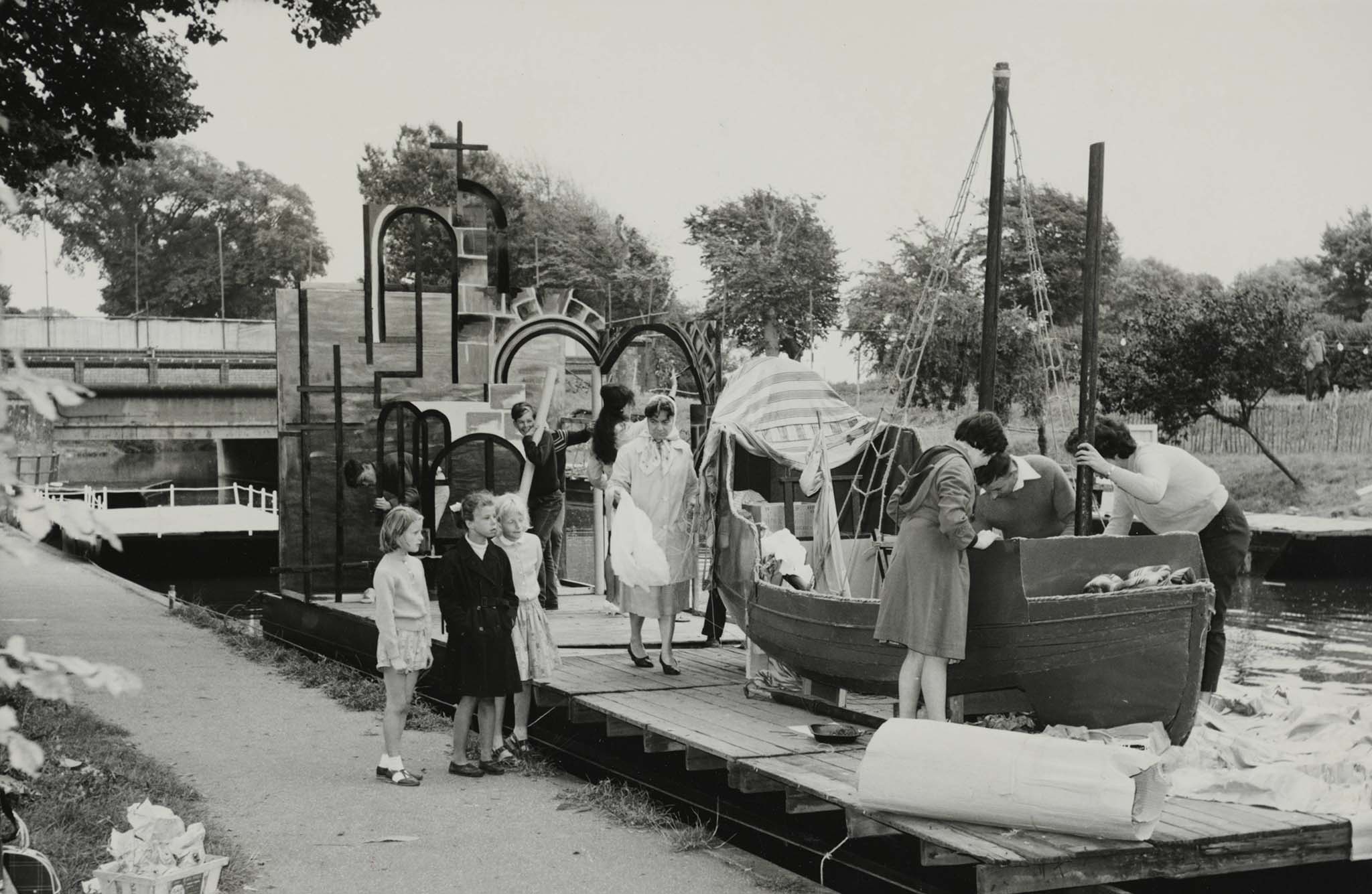
A century or so later, Hythe retains its comfortable and sleepy air: the unexplained theft of 11 skulls from the church ossuary in 2018 was the biggest shock to the community in years. Despite oozing old-world charm, Hythe rarely witnesses the crowds that descend on Whitstable or Margate on hot summer days, partly because of its lack of train connections, and partly because of a dearth of obvious tourist attractions. Though it was briefly a fashionable resort, with a Venetian fete on the Royal Military Canal a draw for tourists in the Victorian era, there are now few seafront facilities catering for visitors beyond ice cream vans, some occasional food trucks and a couple of fish restaurants. There are no amusement arcades or fairground rides, and though the clean, massive shingle beach is probably the best for swimming on the Kent coast, the front is more popular with dog walkers and fishermen than sunbathers and pleasure-seekers.
Although Hythe’s town centre has been going through some difficult years – its once bustling antique shops now outnumbered by charity outlets and vape shops – it still appears a content town, popular with the retirees who buy properties along the seafront.
Among these properties is Moyle Court, a nondescript 1990s postmodern retirement complex. This sits on the site of Moyle Tower, a gothic mansion built in 1877 by Irish architect and one-time mayor of Hythe, Frederick William Porter, named in honour of his wife, Sarah Moyle. Frederick travelled between Dublin and Kent for a number of years: his father William, also an architect, was responsible for Kent Terrace, a Regency revival development in one of the more affluent suburbs of Dublin. A rambling seaside residence, Moyle Tower was built to be Frederick and Sarah’s retirement home. Frederick suffered with poor health and died in 1901; when Sarah died in 1912, their home was requisitioned by the army to house members of the Devonshire Regiment. In 1923 it was purchased by the Holiday Fellowship (an organisation founded by church minister and social reformer Thomas Leonard to provide affordable holidays for the working classes). Used for that function for many years, in 1979 the building was bought by the British Council of Aid to Refugees as one of 40 UK reception centres for Vietnamese boat people before they were rehoused elsewhere in the country.

One of those who passed through Moyle Tower was Hahn Tran, who fled Saigon when the North Vietnamese army arrived in 1975, fearing that his father’s migration from the communist north some years before would make his family a target. After going into hiding, he and another brother fled the country in 1979 in an 11-metre boat with 86 others. Attacked by Thai pirates just three days into their journey and turned away from Singapore and Malaysia by armed forces, Hahn was picked up by a British merchant vessel from a deserted island after a violent storm, becoming one of the estimated 19,000 Vietnamese refugees resettled in the UK between 1979 and 1990.
While the Thatcher government was not keen to take in these refugees, privately predicting riots if they were offered council housing, their traumatic journeys were widely covered in the media and generated great sympathy in the UK, with local authorities, church groups and local reception committees making major efforts to support arrivals. After refugees were met at the airport by government officials, reception centres such as Moyle Tower were used to resettle them, provide language training and acclimatise them to British life while jobs and homes were found for them. Despite Hythe’s reputation as an inherently conservative and elderly town, there appeared to be very little local opposition. Thanh Cherry, director of the Hythe reception centre, recalls that “locals saw the Vietnamese as the best thing that ever happened to Hythe”, recounting to historian Jordanna Bailkin that the presence of boat people in the town not only gave the townsfolk an opportunity to engage with difference, but also made them feel that they were “doing good”.
Despite Hythe’s reputation as an inherently conservative and elderly town, ‘locals saw the Vietnamese as the best thing that ever happened to Hythe’. The presence of boat people made the townspeople feel they were doing good
Fast forward to 2020. A new population of “boat people” are arriving in Kent. These are the asylum seekers taking increasingly risky journeys in small boats, ranging from glass-fibre rowing boats and sea kayaks to larger rigid inflatable boats with outboard motors and even jet skis. The majority attempting the crossing are originally from the Middle East, Iranians, Iraqis and Syrians being the most numerous. Most – around 60 per cent – are men, but many are women, with entire families sometimes making the journey together. Before 2014 the numbers attempting to cross the channel by boat were thought to be insignificant, although in 2002 a Russian national died attempting to cross in a canoe, and in 2003 two unknown men were discovered drowned in the sea and assumed to be asylum seekers. But from 2014 the European migrant “crisis” associated with the conflict in Syria and continuing war in Iraq, coupled with increasing securitisation of the borders of the EU, witnessed ever more desperate and risky journeys being undertaken. Though this was most evident in the Mediterranean (where more than 3,000 drowned in attempting the crossing to Europe in 2014 alone), the media began to document increasing numbers crossing the English Channel by boat as the authorities clamped down on other clandestine methods of travel by road and rail.
In their analysis of media coverage at this time, Kara Dempsey and Sarah McDowell show that there were very rapid shifts in the portrayal of these asylum seekers. They note that the UK press initially highlighted the humanitarian dimensions of the ‘migration crisis’, personalising the migrants’ plight with stories of their difficult journeys. But gradually this began to shift with the emergence of language that dehumanised the displaced, describing them variously as a wave or swarm. Compared with their European counterparts, the British media was more likely to describe migrants as “illegal” and less likely to highlight the geopolitical instabilities that caused them to migrate. Given this emerging construction of asylum seekers as a threat, the British government made repeated attempts to reassure the public that it was tightening control of the border, beefing up security checks and investing in new security infrastructure to deter clandestine entry to the UK.

Seeking to demonstrate this enhanced control, the Home Office boasted that British and French border patrols had prevented around 39,000 illegal crossings in 2014–15, with most of these attempts involving asylum seekers breaking into lorries at the Port of Calais. However, the media began to fixate on more audacious attempts to cut or climb perimeter fences to access Eurostar trains, while in the summer of 2014 a group of 200 stormed a ferry, causing significant disruption to services. Such incidents allowed the media to talk not just of the increasing desperation of asylum seekers but their recklessness, stressing the danger their behaviour posed to others. Significant in this respect was the 2015 coverage devoted to Abdul Rahman Haroun, a migrant from Sudan who managed to walk all the way through the Channel Tunnel, successfully claiming asylum the following year after a nine-month sentence for obstructing rail services. Many others were not as lucky: multiple deaths were recorded in 2015 as determined migrants attempted to jump on to moving trains near the Calais Coquelles terminal, partly because the double security fence erected around the Port of Calais made accessing the port increasingly difficult. Of the 28 refugee fatalities known to have occurred in 2015 on the French/English border, 12 occurred on or near the French Eurostar terminal.
I have every sympathy with holidaymakers who are finding access to Calais difficult because of the disturbances there and we will do everything we can to work with the French to bring these things to a conclusion
The Channel Tunnel – once heralded as a site of seamless European mobility – became the focus of anxieties about the porosity of the border, as Chenchen Zhang describes:
“The Channel Tunnel … provided a focal point for visualising the idea of border threats … made real through the circulation of numerous images in newspapers and TV news shows depicting ‘would-be’ illegal migrants wandering in the terminal area or found hidden under lorries. The images are often accompanied by dehumanising descriptions referring to unauthorised travellers as ‘flood’ or ‘swarm’ … The visual thus ‘speaks’ through interacting with other visual and textual discourses, which have also been used by government ministers.”
Downplaying the human cost of the crisis and externalising much of the blame to the French authorities, the British media also highlighted the economic consequences of regular migrant incursions into the Channel Tunnel, and, for the first time, the stacking of lorries on the M20 for reasons not related to industrial disputes or bad weather. One lengthy delay, in July 2015, was caused by the death of a Sudanese man under the wheels of a lorry at Calais. The following day, the then prime minister David Cameron stated: “I have every sympathy with holidaymakers who are finding access to Calais difficult because of the disturbances there and we will do everything we can to work with the French to bring these things to a conclusion.” He neglected to pass on any condolences to the victim’s family.
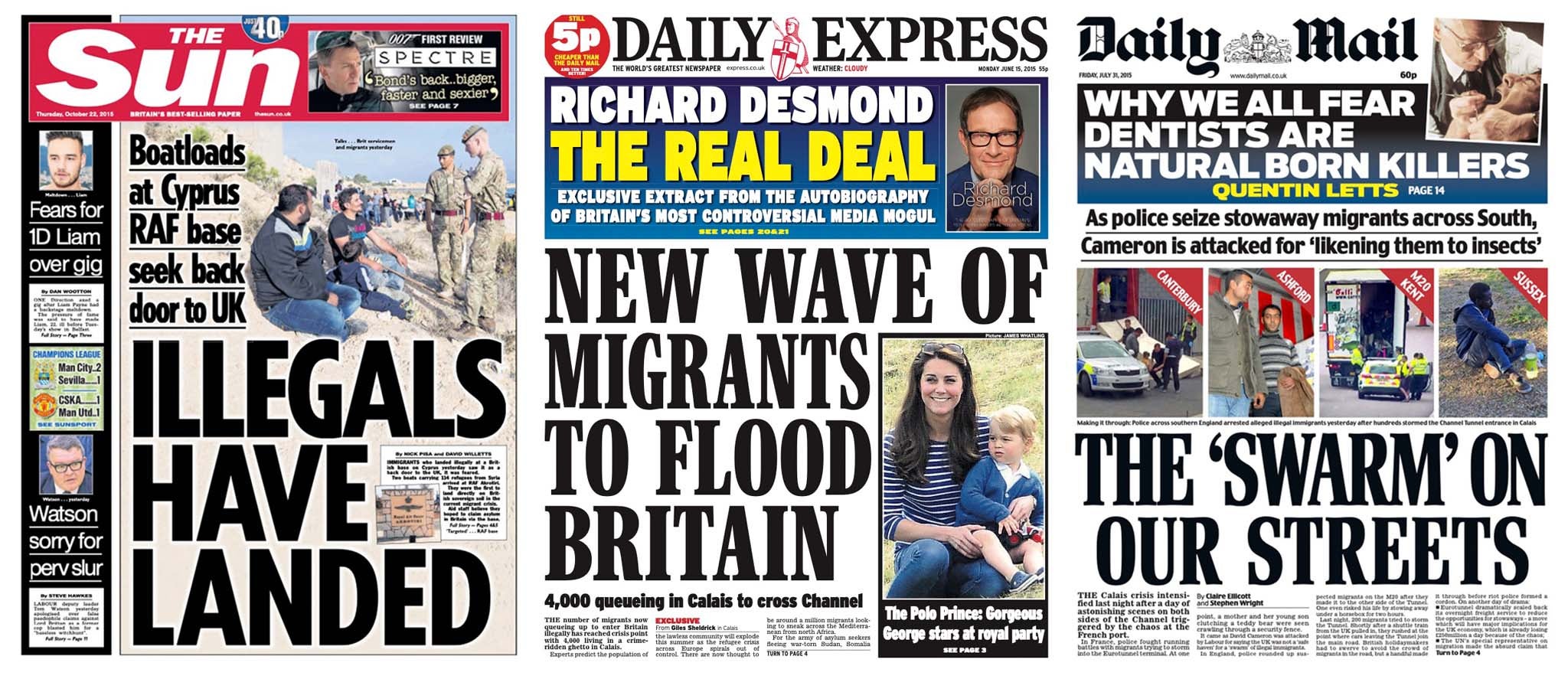
With the British press narrating a “crisis in Calais” during the summer of 2015, Theresa May and her French counterpart Bernard Cazeneuve signed the agreement that resulted in the infamous Wall of Calais, alongside increased police patrols and CCTV surveillance. Eurotunnel also cleared 100 hectares of vegetation between the Sangatte camp and its terminus to remove hiding places, flooding part of this land to discourage attempts at incursion. This securitisation made crossing via the tunnel or ferry port less of an option. With the 2016 destruction of the Calais camp and the dispersal of its occupants, it became increasingly likely that crossings would be made via other routes. A spate of small boat crossings in November and December 2018 (amounting to 138 people) confirmed this and led then Home Secretary Sajid Javid to organise a coordinated response by the Border Patrol and Immigration Control. Nonetheless, in 2019 an estimated 2,000 migrants successfully made the crossing to the UK in small boats, most landing around Dover and Folkestone, but some towards Walmer and Deal to the north and as far south as Fairlight and Winchelsea in Sussex.
Images of these crossings were widely circulated, becoming the dominant visual dramatisation of irregular migration to the UK. Suddenly, the focus shifted from France and the tunnel to the busy waters of the channel, so often the setting for national myth-making, and a space laden with the “material legacies of colonialism”. Images of rubber dinghies crammed with wet, cold migrants, many of them not wearing lifejackets, became a news staple, variously evoking pity, anxiety or fear. Stories highlighted the ill-preparedness of those crossing, many of whom were simply provided with a boat and basic information about suitable landing sites. First-hand accounts, such as this provided by a Dover fisherman, emphasised the danger:
“I looked through my binoculars and I could see something. It was 10 in the morning on a flat, calm, sunny day. We were four miles off Dover. As we got closer, I could see they were waving a white T-shirt tied on an oar. It was obvious they were in distress … I got alongside, and one of them leapt for the boat. He was hanging on my railing as we were still moving. There was panic in the dinghy. They’d obviously been out there a while. They didn’t speak English so I pointed towards France and a woman nodded … The lady was being quite ill. There was a bloke bringing up blood, that might have been through dehydration. My anglers actually gave them some of their clothes, because the dinghy was half-full of water.”
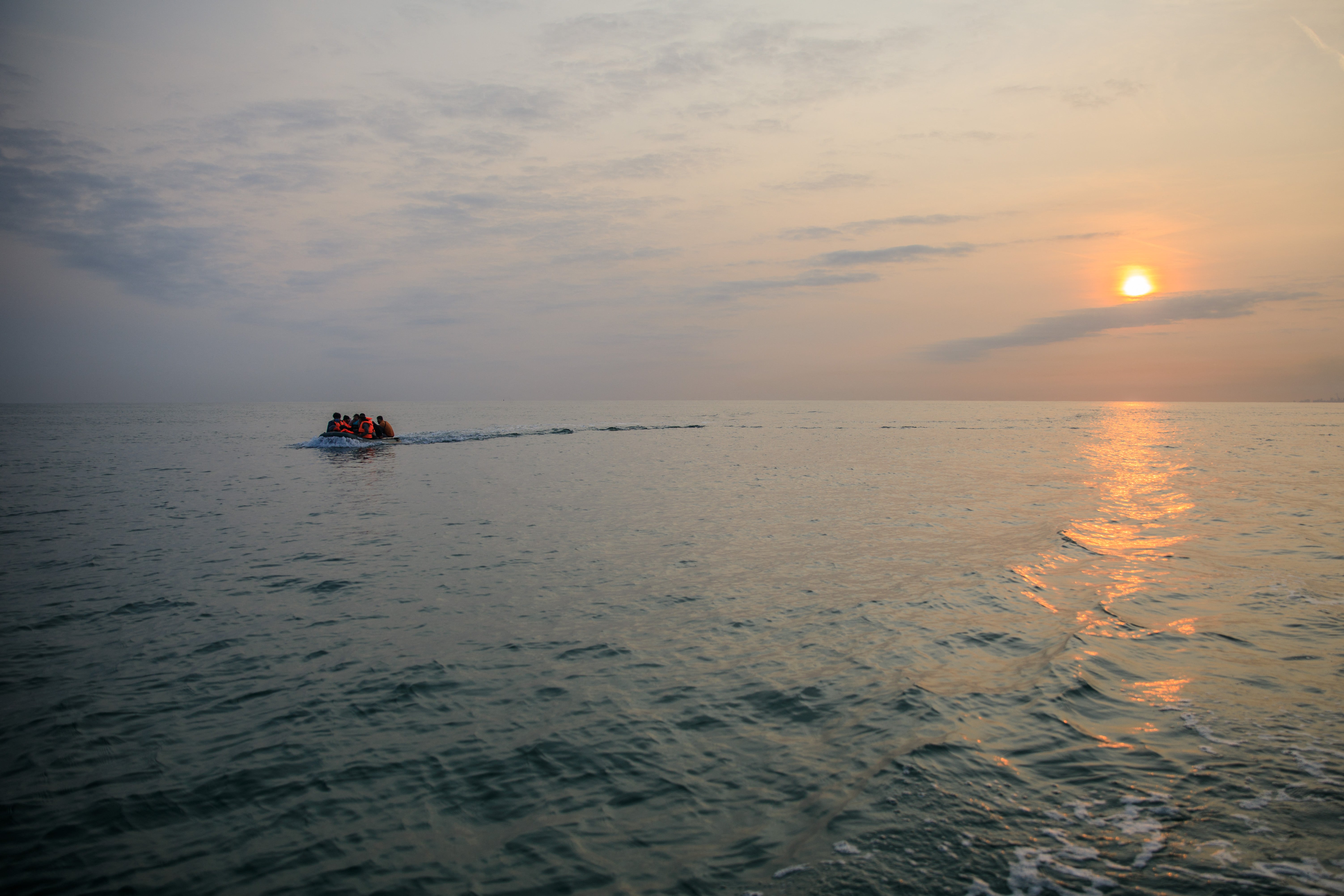
The emphasis here is clear: even on good days, when the sea is flat calm, these crossings are dangerous when attempted by inexperienced crew. Coupled with images of ill-prepared migrants rowing unseaworthy boats with spades or arriving drenched to the skin in overcrowded rib boats, such coverage establishes the idea that these are irresponsible people, risking their lives as well as the lives of others. Particular condemnation is reserved for those travelling with young children. Few articles note that those crossing are seeking a better future for their children, or that it is the UK’s securitisation of the border that has forced these families to undertake this dangerous journey. No one suggests that easier routes should be opened to allow the migrants to seek asylum in the UK, or that they should be brought to the UK for their claims to be assessed.
Geographer Nicholas de Genova argues that the state and the law use this “border spectacle” to reaffirm sovereignty, making those who dare to cross borders via unapproved routes hyper-visible through surveillance and media coverage, illegalising them in the process. Images of this “spectacle” became relentless in 2020 as the press highlighted growing numbers crossing the channel, depicting them as migrants to be repelled rather than refugees to be welcomed.
On one day in January 2020, 102 refugees were picked up by the Border Force, most in rubber dinghies attempting to cross in treacherous conditions, and another nine were detained on a beach near Folkestone. The numbers increased further during the clement summer weather of 2020, with the suspension of ferry crossings during the Covid-19 lockdown and calm conditions coinciding with new records in the number of migrants intercepted in the channel. Images of patrol boats abounded, with the English Channel depicted as a battleground where migrant boats played cat and mouse with border patrols. At times, refugee boats were also circled by the media: remarkably, both BBC and Sky carried live pictures of the crossings in the summer of 2020, migrants cowering away from cameras as journalists asked them where they were from.

This grotesque reality TV was fuel to the fire and helped whip up a veritable moral panic about the crossings, something easily done in a summer when Covid-19 and Brexit was focusing minds on the border as never before. Parts of the press reported that French politicians were encouraging crossings by suggesting that life in England was easy for migrants; others argued that racism in France was a major push factor for those making the journey. Countering, the Minister for Immigration Compliance, Chris Philp, stated that he shared “the anger and frustration of the public at the appalling number of crossings … they are totally unacceptable and unnecessary as France is a safe country”.
However, Sir David Normington, former permanent secretary at the Home Office, argued that the only solution was for French officials to “intensify their efforts” to stop the migrants leaving France. Irrespective of this, the numbers increased: 145 on 8 May 202; 166 on 3 June; 180 on 12 July; 202 on 29 July; 235 on 6 August; and a record (at that time) 416 people on 2 September. Responding to the latter figure, Home Secretary Priti Patel argued that “the situation simply cannot be allowed to go on”, appointing a former Royal Marine as a “clandestine channel threat commander” and sending drones to the French to help in surveillance operations. The battleground metaphors were stepped up.
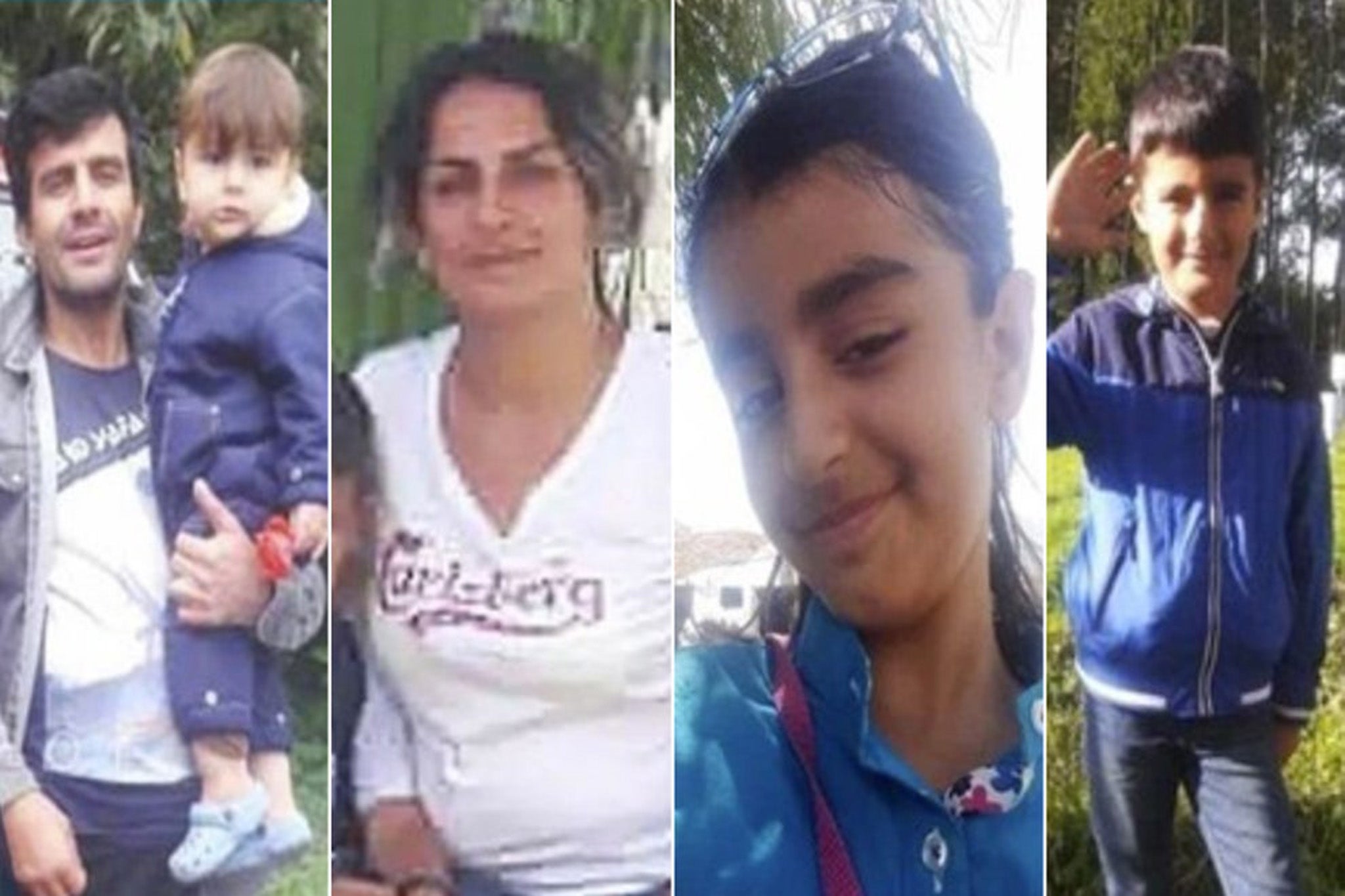
But something else was shifting in the coverage of the sea crossings. Before 2020 most of the coverage was about the boats rather than individual asylum seekers. The spectacle of dinghies and ribs crowded with a huddled, faceless mass of migrants supported the narrative of a crowd heading in the direction of the UK. This started to change as names were put to those whose journeys ended in tragedy. Most notably, the death of a family of five Kurdish-Iranians, including a 15-month-old boy, was given prominent media coverage in October 2020, with headlines quoting charities which claimed that the channel risked becoming a “graveyard for death”.
As with the drowning of Alan Kurdi, the three-year-old Syrian photographed washed up on a Turkish beach, the death of Artin Iran Nejed and his family highlighted the dangers of the channel crossing, allowing refugee charities to evoke compassion among those otherwise unsympathetic to the plight of those seeking asylum in the UK. However, this was immediately countered by coverage that put the blame for these and other deaths like them on the unscrupulous people smugglers who were forcing refugees on to crowded boats at gun-point. Precious little attention was devoted to the UK’s securitisation of the border, which made crossing the channel by boat the only real option for those wanting to seek asylum in the UK.
Thankfully, the majority of those who are not picked up by the French border forces make it to the UK, either being escorted to Dover Harbour in boats or being picked up on Kent’s beaches by the police who are tipped off by locals. But the fact that increasing numbers managed to evade cross-channel patrols and were pictured standing on Kent beaches allowed some sections of the media to talk of a de facto ‘invasion’ (one article in The Sun carried a photo that it claimed captured “The Moment Migrants Storm Kent Beaches”, invoking militaristic metaphors of national defences having been breached). This type of representation embodies the “myth of encroachment” that Patrick Wright argues has proved so important in recent debates about English identity. For Wright, such myths produce a “Manichaean understanding” of England as a virtuous nation constantly under threat from the outside:
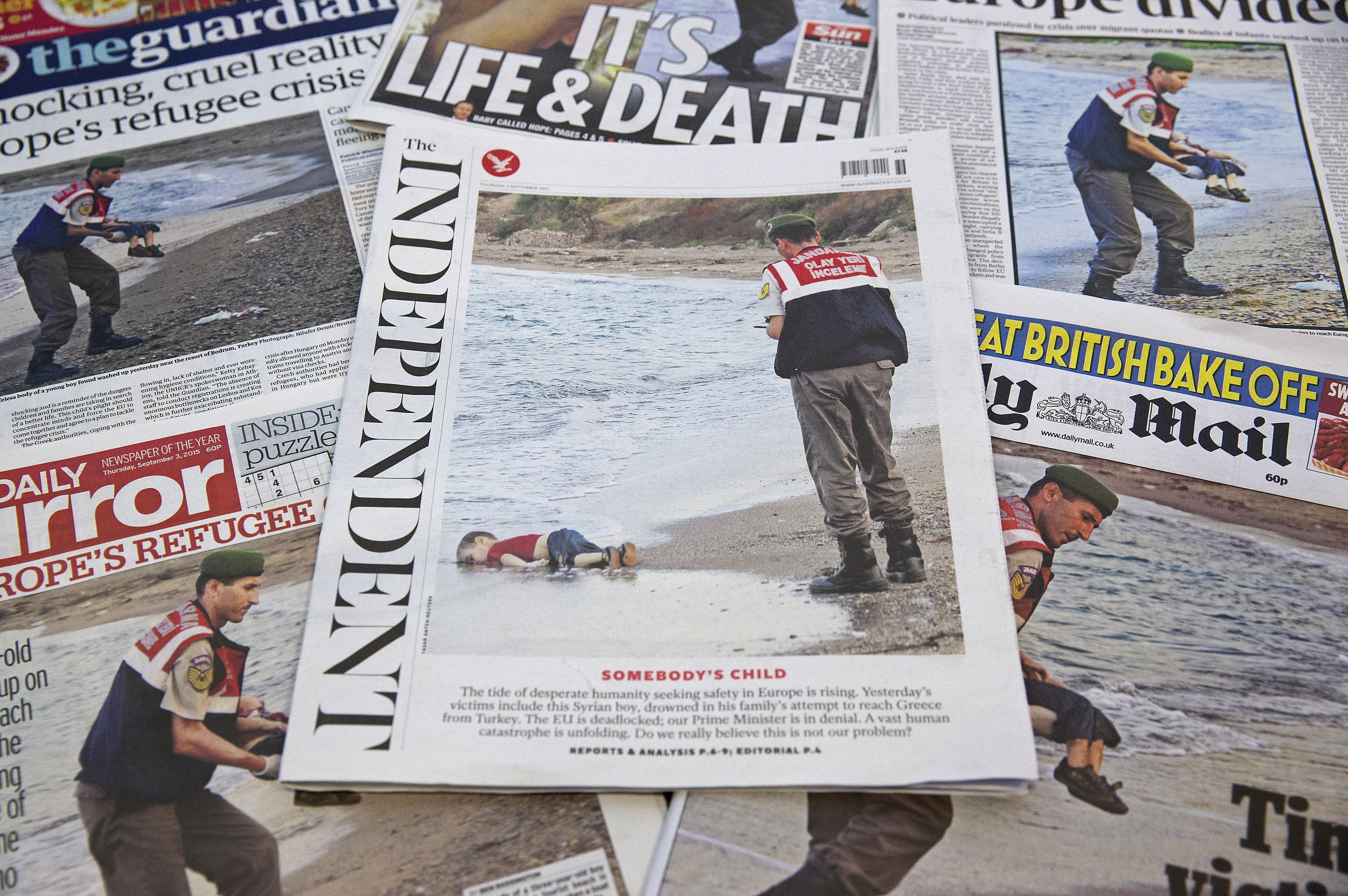
“To the considerable extent that this resurgence of English identity has been engineered by partisan politicians, campaigners and journalists, it has also been activated by the deployment of allegorical narratives that work by simplification and polarisation. In these encroachment narratives, the traditional nation and its way of life is typically squared off against a vividly imagined and probably advancing threat – be it immigrants, bureaucrats, Europe, ‘experts’ etc. Where the reality addressed is likely to be complex and full of nuance, encroachment narratives of this kind press that reality into a brutally simplified and prejudged opposition between good and evil.
The British press was evidently not concerned with such nuance and continued to present accounts deploying myths of invasion. Perhaps this was not surprising in the febrile atmosphere engendered by Covid and pre-Brexit anxiety. After all, in the run-up to the Brexit referendum, the spirit of 1945 was regularly invoked by those arguing that it was time for Englanders to take back control, and a facile equation was often drawn between the Nazi threat and a contemporary politics in which the white working class was being forgotten by a cosmopolitan Remainer elite who embraced the idea of open borders. As such, Brexit was fuelled by a cultural manipulation of ideas of Englishness which incorporated white nostalgia for the British imperial project as well as the class resentments emerging in an era of austerity. Brexit was, then, a vote against London, globalisation and multiculturalism as much as it was a vote against Europe, a combination having particular appeal for many older, white voters living outside the capital. As subsequent coverage of the boat people in Kent shows, images of immigration were deployed to suggest that everything that is good about England is threatened by everything that comes from elsewhere, with the channel crossings depicted as an existential threat to sovereignty.
They launched their own patrol boat ‘Alfred the Great’, helmed by an ex-navy veteran who patrolled the waters around Dover, promising to stand firm ‘against the unprecedented invasion by economic migrants’
Predictably, perhaps, the figuration of Kent as the frontline in the migrant crisis witnessed increasing numbers of “proud patriots” (white, right-wing extremists) taking it upon themselves to patrol the Kent coast. In September 2019 the far-right group Britain First started beach patrols on Samphire Hoe, the country park created from the Channel Tunnel excavations, in what they dubbed Operation White Cliffs. In 2020 its members blocked the Port of Dover, causing gridlock, and also launched their own patrol boat Alfred the Great, helmed by an ex-Navy veteran who patrolled the waters around Dover, promising to stand firm “against the unprecedented invasion by economic migrants”. Though branded as racist vigilantes by many, and repeatedly confronted by the police, their efforts to survey the beaches of Kent looking for bodies and boats was arguably encouraged by the government’s own rhetoric, which has demanded that coastal populations be constantly vigilant. Project Kraken, launched by the Home Office in 2016, implored people to report unusual behaviour off the coast. The campaign’s poster, Seen Something Suspicious?, appeared to be modelled on Second World War propaganda posters, the image of a lighthouse shining its light into the murky gloom suggesting the importance of constant surveillance. For criminologist Duncan Walker, Kraken constructs a “surveillance community”:
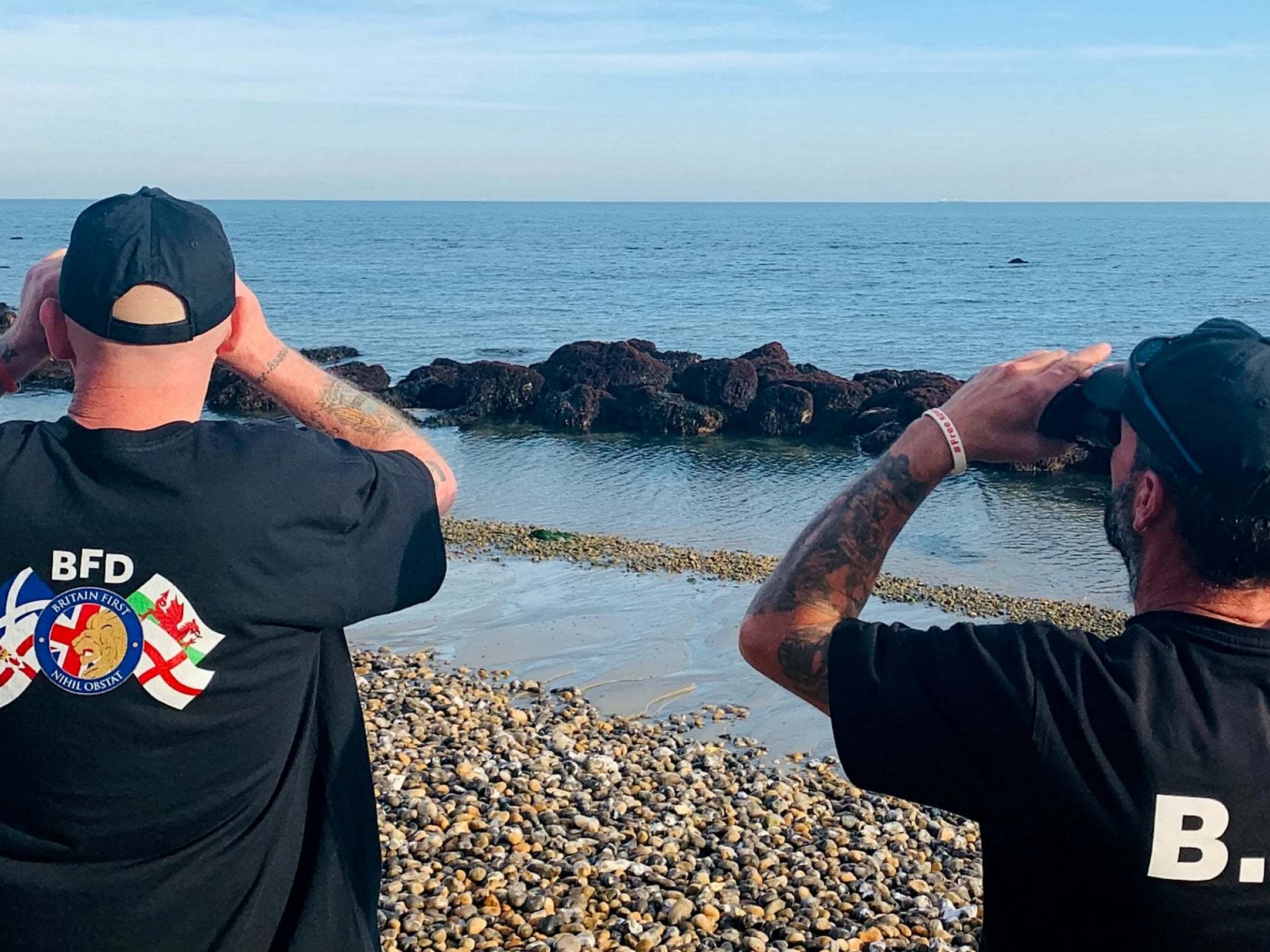
“UK waters contain remote ‘blind spots’ that elude local and national security attention, and which are prone to illegal incursion by traffickers of humans, drugs, weapons and terrorist thought and resources. Such spaces of seclusion are marginal to high politics of national security. They tend to be ‘seen’ and trodden not by state personnel but by the public, and particularly those whose lives and livelihoods are conducted, to some degree, ‘on the edge’ of land/water. Such people are often peripheral to high-security politics yet endowed with the intuition – the ability to filter (ab)normalities during their daily encounters of land/water – that the UK government needs.”
Walker argues that Project Kraken narrates “a sense of foreboding at those unknowns lurking on or beyond the terranean visual horizon”. This is the sort of thinking played up in John Lanchester’s dystopian novel The Wall, published in 2019, which depicts a future in which climate change and sea-level rise has forced increasing numbers to seek entry to the UK, and where young conscripts are forced to pace the bleak concrete of the National Coastal Defence Structure, endlessly staring out into the gloom for the nameless Others who might appear at any time, rising from the sea.
The involvement of right-wing vigilantes, known to have attacked some of those landing at Kent, further contributed to the spectacle of the border. Their members spread rumours about landings, filmed the refugees coming ashore, accused the state of inaction and identified pro-refugee campaigners as traitors. They also fuelled Islamophobia by invariably labelling all migrants, irrespective of their background, as Muslim men, depicting them as economic migrants and potential threats to English values.
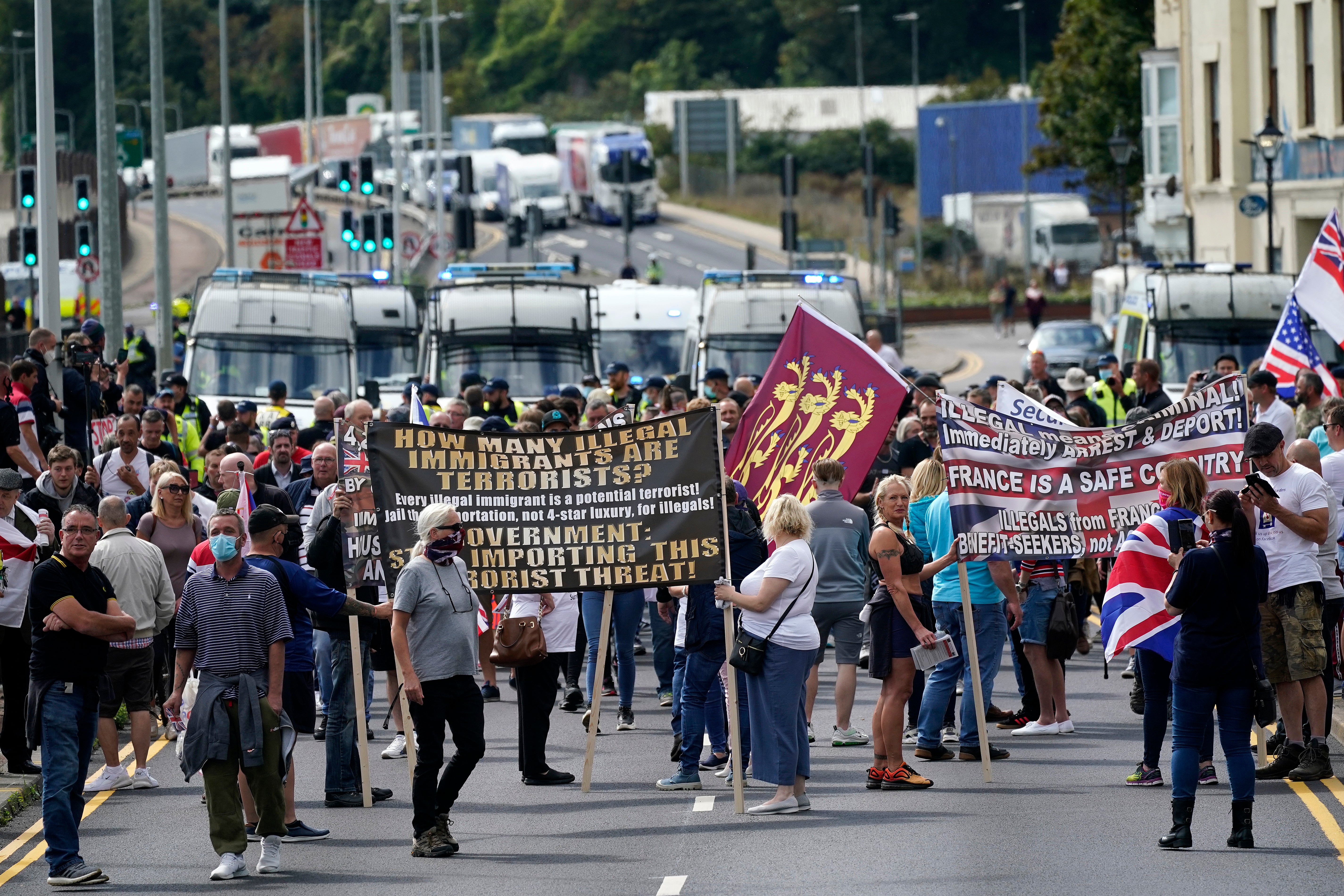
I witnessed this first-hand on a visit in September 2020 when I was able to use the loosening of the Covid-19 lockdown to take a brief camping trip to Kent. For mainly nostalgic reasons I wanted to return to a campsite I had been to in 1978, in Kingsdown, immediately to the south of Walmer, a village sitting at the foot of the north end of the cliffs of Dover. My memory of the campsite was of a long sloping field with a spectacular view of the English Channel, ringed by dense woodland and just a short walk from the beach. My recollection was remarkably accurate, and the campsite was largely unoccupied despite the dry, sunny September weather. Kingsdown is often described as idyllic, with quaint, whitewashed fishermen’s cottages on the beach, many of these holiday lets, and larger, well-kept, period properties in the village proper, which boasts an old-fashioned village butcher, a post office and several well-regarded pubs, including the Zetland Arms, ever popular with walkers on the English Coastal Path.
I travelled with my partner, and we had the campsite more or less to ourselves, bar a few caravans and one or two solitary campers nearby. We pitched our tent next to a clump of blackthorn trees hung with plump, purple sloe berries, facing due east so we could wake with the sun rising over the sea. On the second, bright, windless morning, I awoke early, poking my head out of the tent to take in the view over the channel. Even before six in the morning, the channel appeared busy with what I first took to be mainly inshore fishing vessels and netters, as well as the usual parade of tankers and container ships mid-channel. But one ship stood out, a larger vessel that appeared to be towing another small boat. Struggling to focus through the early morning haze, I retrieved my binoculars, confirming my initial suspicions. This was the large, grey Border Force cutter, Seeker, going along the channel picking up migrant boats. Zooming in I could see groups of people huddled to the front of the boat, their inflatable dingy tethered to the rear. I also realised I was not the only one watching through binoculars, and that 50 or so yards away, a solo camper was also showing a lot of interest in what was going on, with notebook in hand.
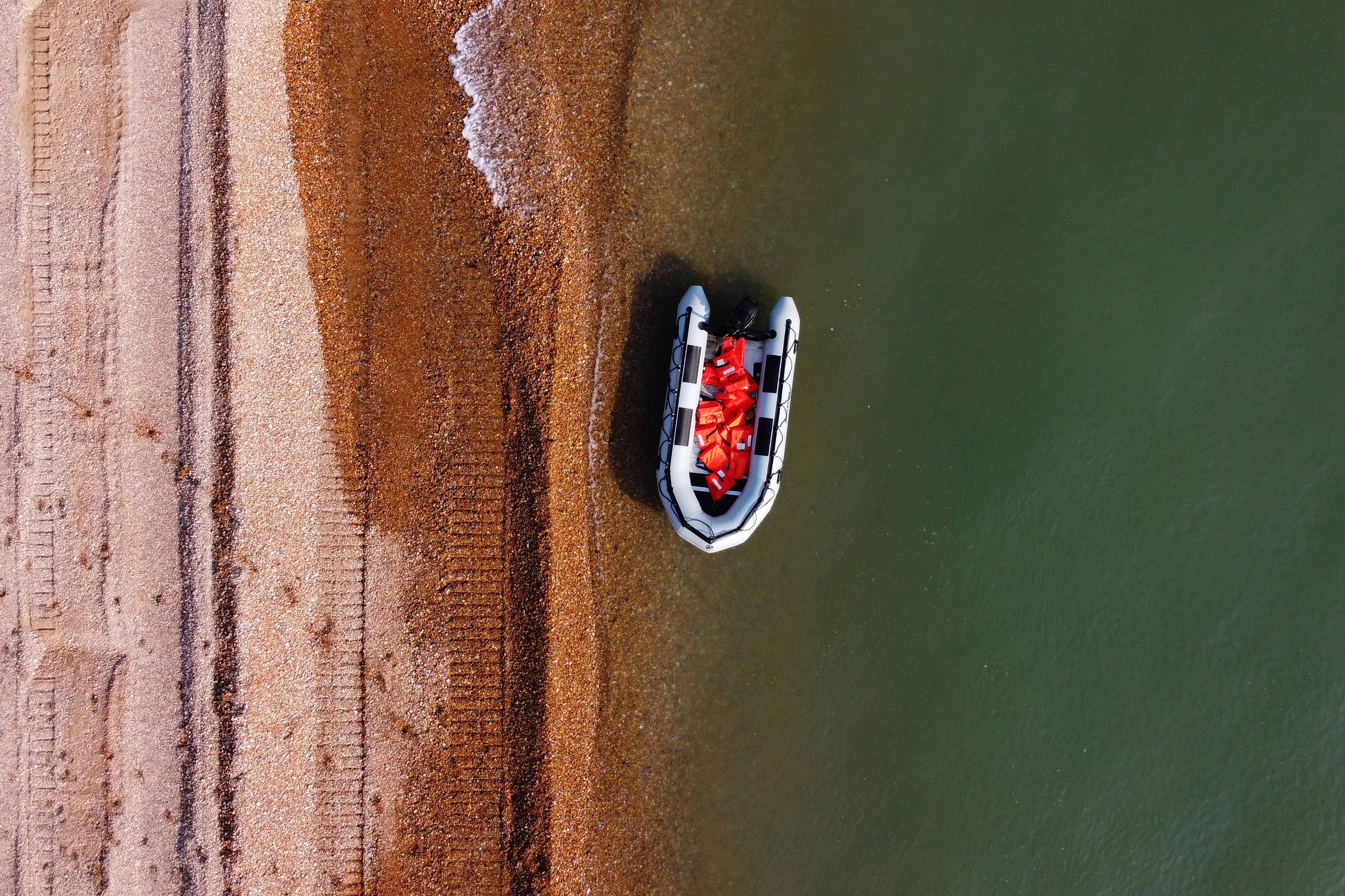
Over the next 60 minutes or so I watched the boat move up and down the coast picking up another three small ribs or dinghies, before I retreated to the shower block to prepare for the day. There, as I showered, I overheard a woman washing up outside: “Is that another lot coming in?” Then another voice: “It’s been every day this week, yesterday the police ended up chasing them through the golf course, running through gardens.” The first voice again: “It’s terrible … if it was down to me I’d put mines on the beach, that would soon stop them.”
Both laughed. When I came out of the shower a few minutes later and returned to my tent I could see the boat they were talking about – a large inflatable boat with perhaps 10 people sitting on each rib, just pulling on to the wide, private beach at the foot of the cliff below the golf club. Ten minutes later, another smaller rib arrived and another group waded ashore just a few hundred yards away. It was at this point that I noted that the solo camper who was our nearest neighbour on the campsite, 50 yards away, had packed up and left.
I spotted a cluster of figures huddled at the side of the road, wet and bedraggled, wearing what looked like traditional Kurdish clothes, with a woman in a headscarf cradling a child in her arms, two older children alongside her, and an older bearded man
Leaving the campsite an hour or so later, I made a wrong turn and found myself driving towards the golf club rather than towards the main Dover Road. Cursing my own incompetence, I suddenly spotted a cluster of figures huddled at the side of the road, wet and bedraggled, wearing what looked like quite traditional Kurdish clothes, with a woman in a headscarf cradling a child in her arms, two older children alongside her and an older bearded man. My instinct was to slow down, and my mind raced as to how we could help them, whether we had food left from the previous night we could share with them. But before I could stop, I spotted a police car parked at the junction, and a masked policeman who waved me on insistently. I drove on before I realised I was going the wrong way. I turned round and had to drive past the bedraggled group again, the policeman glaring at me accusingly. We finally arrived at the main road at Ringwould, but not before passing another group sitting in a lay-by who looked as though they had made it about a mile inland before being intercepted by the police and what looked like immigration control staff. Again, they appeared to be a family group, surrounded by officials in disposable face masks who were handing them drinking water. Seeing so many individuals arriving, visibly dazed and confused after the crossing, with no possessions, was profoundly upsetting. My partner fell silent; I did not know what to say. We drove on in silence, holding back tears. The voices I heard at the campsite earlier kept coming back to me: how, I wondered, could people who have witnessed this kind of suffering have such little regard for human life that they would even joke about turning the beach into a minefield?
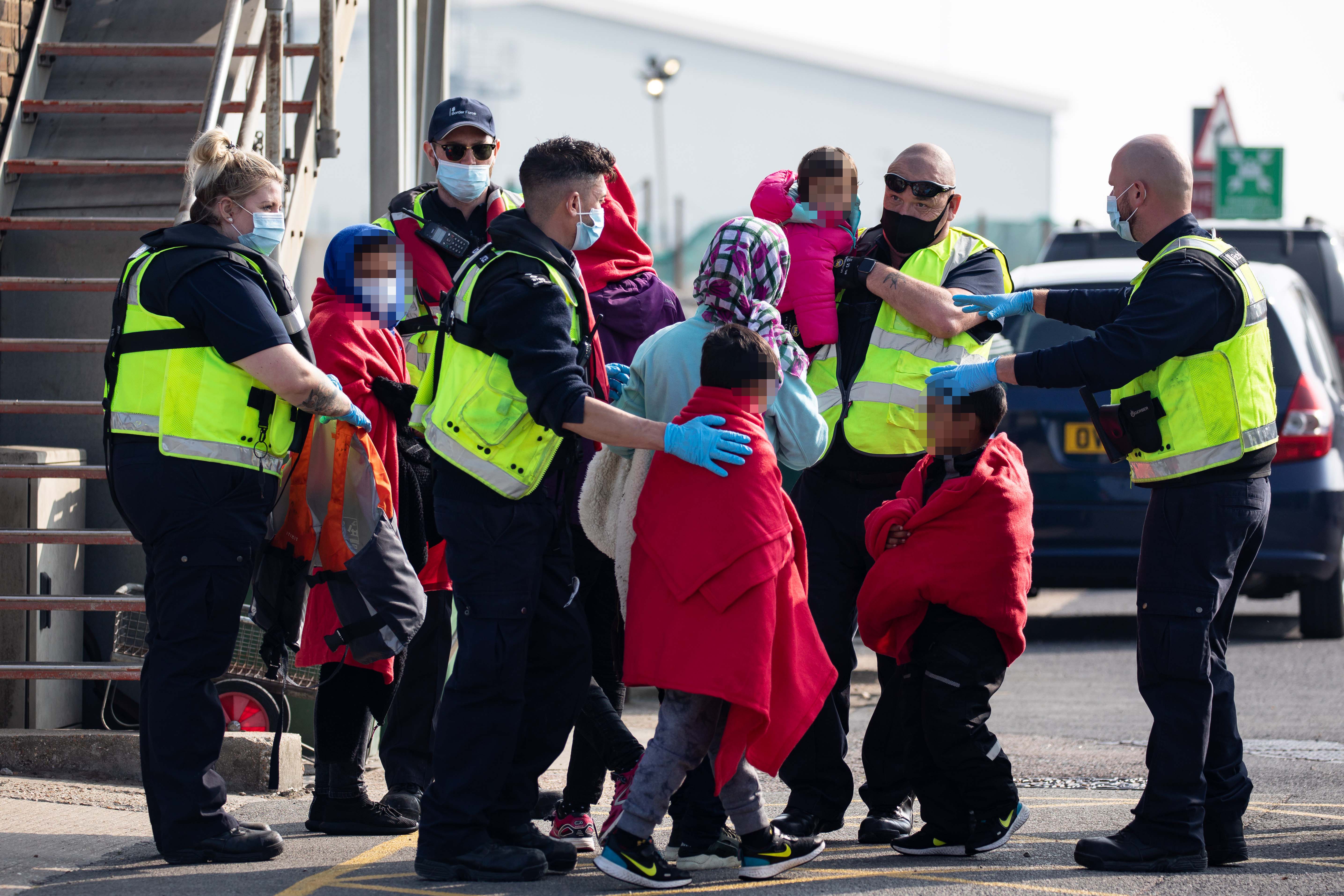
We continued to drive, my partner checking their phone. They started looking for any coverage of the landings we had just witnessed and started scrolling through Twitter. On it they found a series of recent postings of pictures of some of the asylum seekers we had seen landing, and their dinghies abandoned on the beach at Kingsdown. I stopped the car and scrolled through the images. They were not of the family groups we saw, but mainly of well-dressed younger male migrants in designer jackets and western sportswear. In other photos, women and children had been cropped out. Being charitable, I suggested that the photographer obviously felt it wrong to publicly post photos of vulnerable women and children, but carrying on scrolling I saw that the same person had posted a steady stream of photos and images detailing the landings, alongside other posts about illegal immigrants, anti-masking and the state-sanctioned child abuse in Rochdale and Rotherham perpetuated by “Muslim men”. His comments suggested that the media were fixating on ill and vulnerable refugees, but that 90 per cent of migrants were young men, and therefore economic migrants. The photos he posted were designed to back this up and support his accusation that politicians are making Britain a soft touch. As I looked through the photos, I realised that one of the most recent was taken from the same campsite we had stayed at. It slowly dawned on me that the proud patriot regularly documenting the arrival of illegals in Kent was the same middle-aged man who was our neighbour on the campsite.
When I arrived at Sunny Sands, the artwork had, perhaps predictably, been graffitied over by locals with a series of scrawled tags, something I was tempted to read as a comment on Anglo-French relations
Later that day we were back in Folkestone, where I wanted to photograph a piece of art designed to celebrate the 25th anniversary of Eurotunnel in 2019. Yseult Digan, a French-based street artist better known as YZ, was chosen to create a 50-metre-wide image on the tunnel entrance at Calais of a young girl looking towards the other side of the channel, with the twin tunnel entrances serving as de facto binoculars. On the Folkestone side, she painted the girl’s eyes looking out from two of the arches above Folkestone’s Sunny Sands. Designed as a metaphor for the connection between two nations, and the past and future of the tunnel, YZ’s project (I Will Always See You) involved local pupils on both sides of the Channel, and was inspired by her own experience of having been in Folkestone on exchange trips and able to see France from the beach. However, when I arrived at Sunny Sands, the artwork had, perhaps predictably, been graffitied over by locals with a series of scrawled tags, something I was tempted to read as a comment on Anglo-French relations.
So, instead, we decided to head out to the harbour arm, recently restored following the dereliction that followed the axing of the ferries in 2000 and the closure of Folkestone Harbour railway station in 2001. During its years of abandonment, it was mainly used by anglers, though I also occasionally found methadone bottles in the ruined railway station, suggesting that the area had other less salubrious uses. In many ways the state of the harbour arm encapsulated the fortunes of the town. Once Folkestone was a fashionable Edwardian resort, with the harbour arm, the departure point of the Orient Express, overlooked by the majestic Grand and Metropole hotels on the Leas Cliff promenade, designed by Decimus Burton in the mid-1800s. But the decline of local tourism, hastened by the destruction of the pier in the 1940s, the closure of the Leas Tea Pavilion in 1986 and the demolition of the Rotunda Amusement Park in 2003, meant the town became shabby and partly derelict:
“By the advent of the millennium, Folkestone had evidently lost a clear sense of its purpose and identity as a place to live, let alone visit. Many of the buildings in the central area surrounding Payers Park, above all on the main arteries of Tontine Street, which leads down to the harbour front, and the cobbled Old High Street, were dilapidated and boarded up. Local unemployment was high, with key industries, services and businesses in the town having gone to the wall. Educational achievement was statistically of the lowest standard in the country, which pointed to bleak post-school prospects for young people regardless of whether or not they chose to remain in the town. A seemingly unstoppable downward spiral of Folkestone’s general fortunes was the gloomy order of the day.”
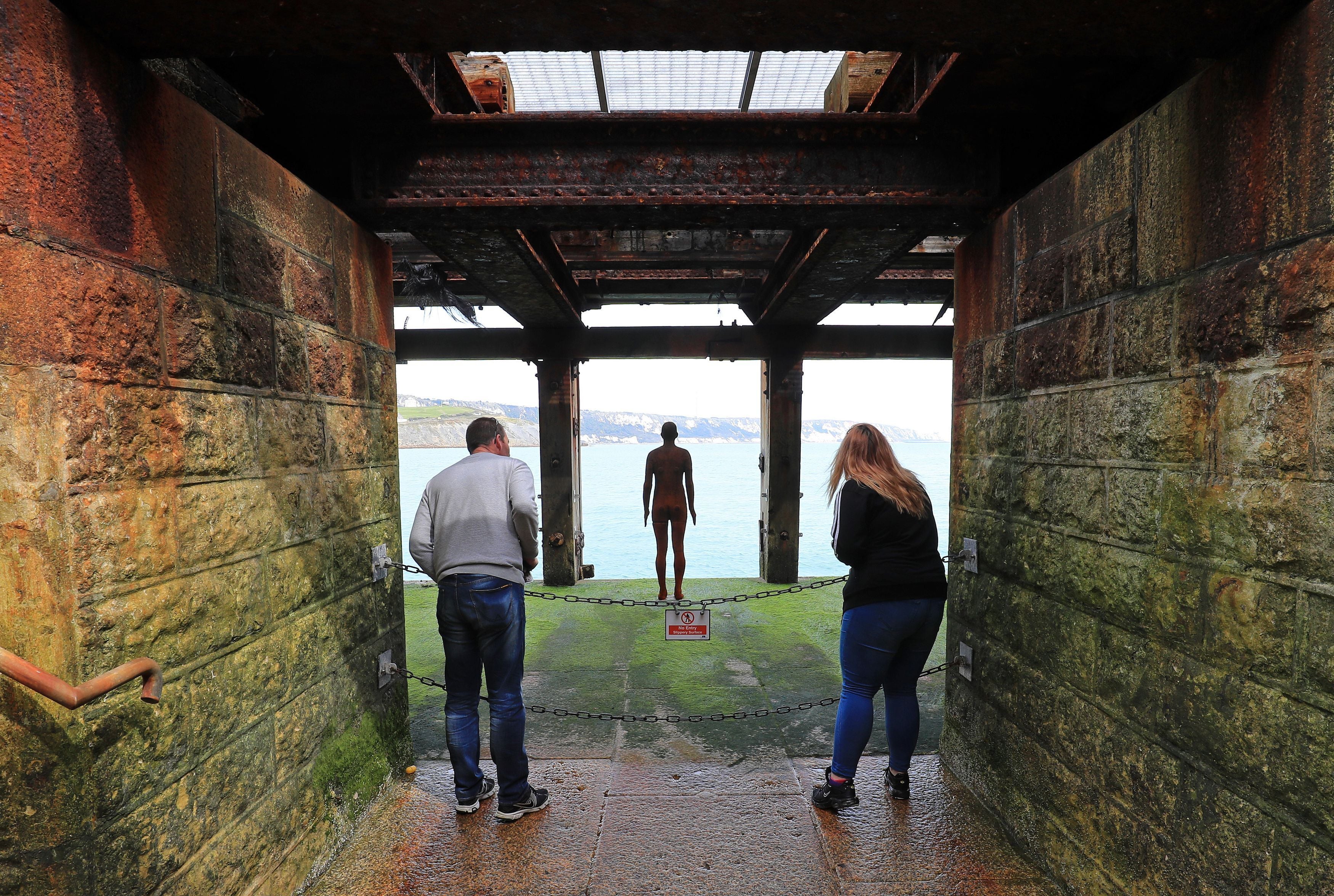
It was also a town divided between the genteel streets of west Folkestone and the more rough and ready areas of east Folkestone, blighted by unemployment. However, the harbour was bought by Roger de Haan, former Saga chairman, in 2004, and from 2014 the harbour arm underwent a dramatic transformation, spruced up, adorned with public art and linked to the town via a green viaduct which is now Folkestone’s stylish equivalent of Manhattan’s High Line. In lockstep with De Haan’s vision of a regenerated, creative Folkestone, the formerly bleak harbour is now home to any number of pop-up eateries and food shacks, many frequented by DFLs keen to explore Folkestone’s Creative Quarter and its sprawling, permanent collection of contemporary urban art, which includes public artworks and installations by Tracey Emin, Antony Gormley, Yoko Ono and Mark Wallinger.
Even in a time of Covid and social distancing, the harbour arm was relatively busy in the early autumnal sun of a September afternoon. As in Margate, the sprinkling of creative dust over the town appears to have attracted the affluent, with the Book Festival (from 2002) and the Folkestone Triennial (from 2004) placing Folkestone firmly on the cultural map and generating favourable headlines in the colour supplements. A 2021 Harper’s Bazaar article described Folkestone as Kent’s “rough diamond, genuine and hardy” as opposed to Margate’s “gentrified hipster parody”, while The Independent suggested that it is “cooler than Margate” and “more inclusive to boot”.
Some identify Folkestone as a prime example of ‘artwashing’, the process whereby art is used to smooth over social tensions and hide gentrification behind a carefully aestheticised facade
Not all agree. Jon Ward, lecturer in cultural and creative industries, has argued that both towns have failed to tackle social problems through art, noting that although the Creative Foundation has secured affordable arts spaces, much of the regeneration is predicated on precarious labour. Moreover, despite the depiction of De Haan as a philanthropic cultural benefactor, few of the 1,000 or so apartments being constructed on the land owned by the Folkestone Harbour Company will be affordable, their prices no doubt inflated by the town’s cachet as a cultural destination. This has led some to identify Folkestone as a prime example of “artwashing”, the process whereby art is used to smooth over social tensions and hide gentrification behind a carefully aestheticised façade.
In recent years, most asylum seekers arriving at the Kent coast have been escorted to short-term detention holding facilities in Dover or Folkestone (at Frontier House or Longport, a freight shed described in a 2015 inspection as a “wholly unacceptable environment in which to hold people”). From here, destitute asylum seekers are typically taken to facilities in other parts of the country, including Yarl’s Wood in Bedfordshire. Yet the increasing numbers arriving in 2020, coupled with the problems of social distancing and hygiene during the pandemic, led to an announcement that, for up to a year, a maximum of 431 adult male asylum seekers would be housed at a former Ministry of Defence property in Folkestone. Shorncliffe Heights, the staging post for so many who left for the Western Front in the First World War, was to become an asylum holding centre, with the Napier Barracks blocks, built in the 1890s, being adapted by the Clearsprings Group to accommodate the refugees.

The local response to the news was largely negative. The local MP Damian Collins wrote to Home Secretary Priti Patel to suggest that the decision had been exceptionally poorly communicated. The local council was first informed about the plan on 10 September (the day before I was in Folkestone photographing on the harbour arm), with work beginning on site the following Monday and the first refugees arriving, remarkably, just a week after that. The fact that the residents would be free to come and go as they pleased (albeit with a voluntary 10 pm curfew and signing-in scheme) raised local hackles. Social media was abuzz with rumour and anxieties about the possible security implications of housing asylum seekers in the town.
A decade or so before, I had listened to and read the objections of villagers in Newton, Nottinghamshire, faced with the prospect of a local ex-RAF base being used as an asylum detention centre. There, complainants argued that young men brought up in “foreign cultures” would not understand local customs or ways of life. Discourses emphasising the dangers of housing asylum seekers near family housing were prominent, and the idea of the asylum seeker as sexual threat was to the fore. In the Napier case, these concerns resurfaced, with Home Office assurances that the asylum seekers were law-abiding dismissed by many residents on the basis that they had entered the country illegally and therefore could not be trusted. Some suggested that they were potential murderers and rapists, arguing that women and children living locally would no longer feel safe. Others voiced the threat of terrorism, stressing that local people used to keep their doors unlocked but would not do so any more. Added to this were concerns about Covid, and the idea that new arrivals would transmit coronavirus to one another and to the wider community. When news of the Kent Covid variant emerged in December 2020, some were quick to suggest, erroneously, that the most likely source of the infection was Napier.
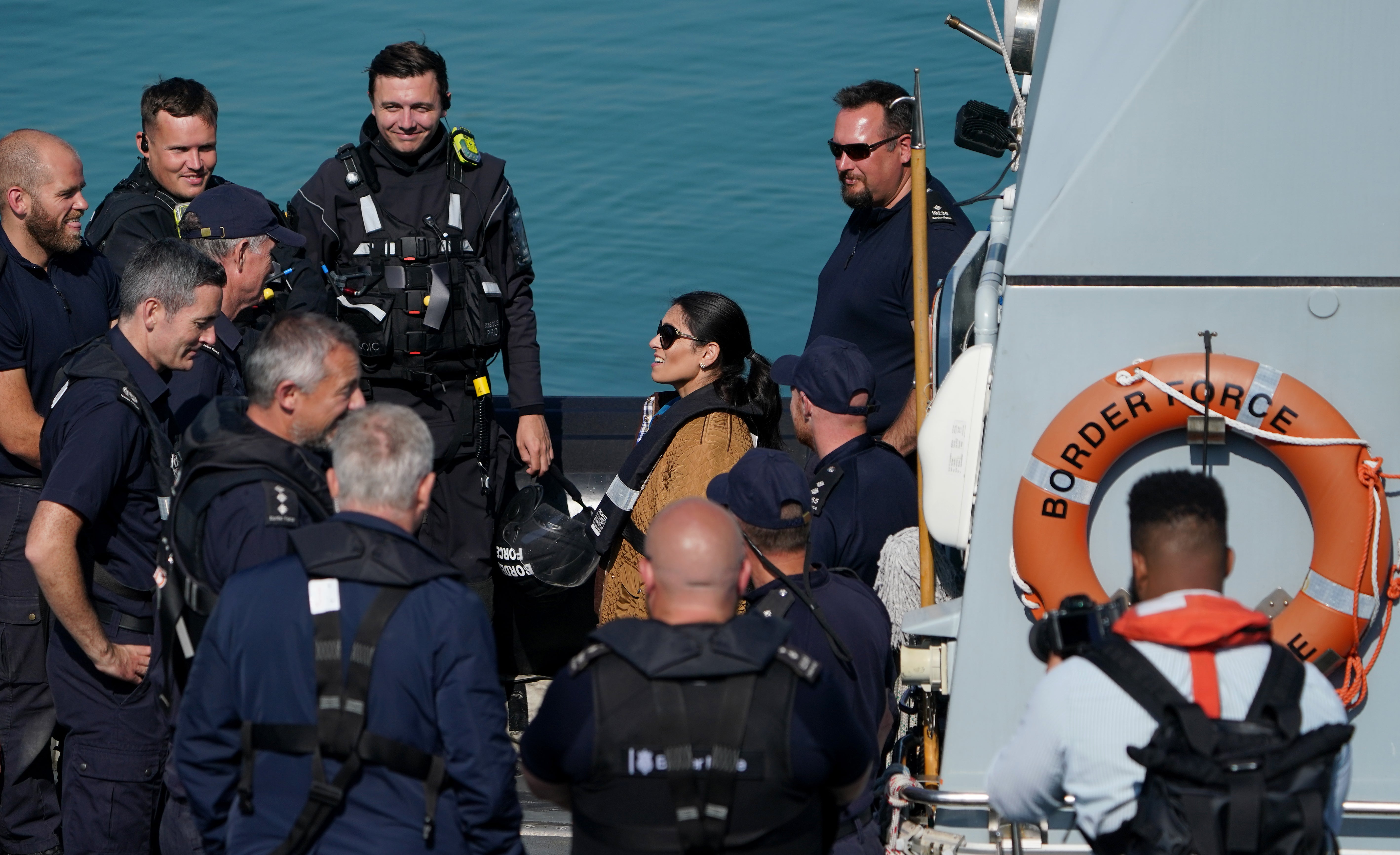
The housing of asylum seekers at Napier Barracks clearly aroused deep passions, and the opposition cause was quickly taken up by right-wing groups, some of whom turned up at Napier on the day the first residents arrived. On social media there was talk of raising a militia to take back the country. One participant – a proudly British Twitter user – argued that the soldiers of the barracks had “wasted their time defending the country only for them [immigrants] to invade us, rape our wives and bleed us dry”. Others spoke of “freeloaders”, suggested that placing “Muslim men” in accommodation opposite nearby war graves was “totally disgusting”, and talked of asylum seekers “grooming 13-year-old girls” online using the “iPhones given to them by the government”.
Throughout, familiar gendered tropes were deployed to present white, English, working-class families as threatened by religious and racial others, with the fragile masculinities of right-wing extremists on display for all to behold. This was far from the welcome afforded to the Vietnamese at Moyle Tower in Hythe in the late 1970s, the sea-view guest house traded for a bleak, institutional setting with right-wing vigilantes skulking outside. Of course, not all locals were so unfriendly. Invoking a discourse of hospitality, local charity activists, the Kent Refugee Action Network (KRAN), organised a counter-protest in October 2020, with up to 200 attending a welcome event where banners and placards were used to show that not all locals were against the centre, albeit a small group of far-right protestors also turned up on the day. Members of KRAN have returned frequently to protest about the conditions at the camp.
Napier has, then, exposed the fault-lines of intolerance and generosity evident in this corner of Kent. But along with a similar asylum centre in Pembrokeshire, Wales, Napier has become a wider signifier, held up by some as emblematic of contemporary attitudes to asylum seekers, and described as Britain’s first modern-day (post-Brexit) migrant camp. Its prison-like, militarised appearance, with security provided by private for-profit companies, appeared deeply dystopian to some, along the lines of the (imagined) internment camp in Alfonso Cuaron’s 2006 sci-fi drama Children of Men, or the eugenic concentration camps in Russell T Davis’s 2019 Years and Years (in which a social worker accompanying his gay asylum-seeking partner across the channel drowns a mile offshore, and washes up on a Kentish beach). Stories of mass Covid infection in overcrowded dorms, with some residents sleeping outside to avoid becoming ill, began to circulate, and migrants spoke to the press about poor sanitation, a lack of showers and generally abysmal conditions. One, Nima, who came from Iran, spoke of his experience:
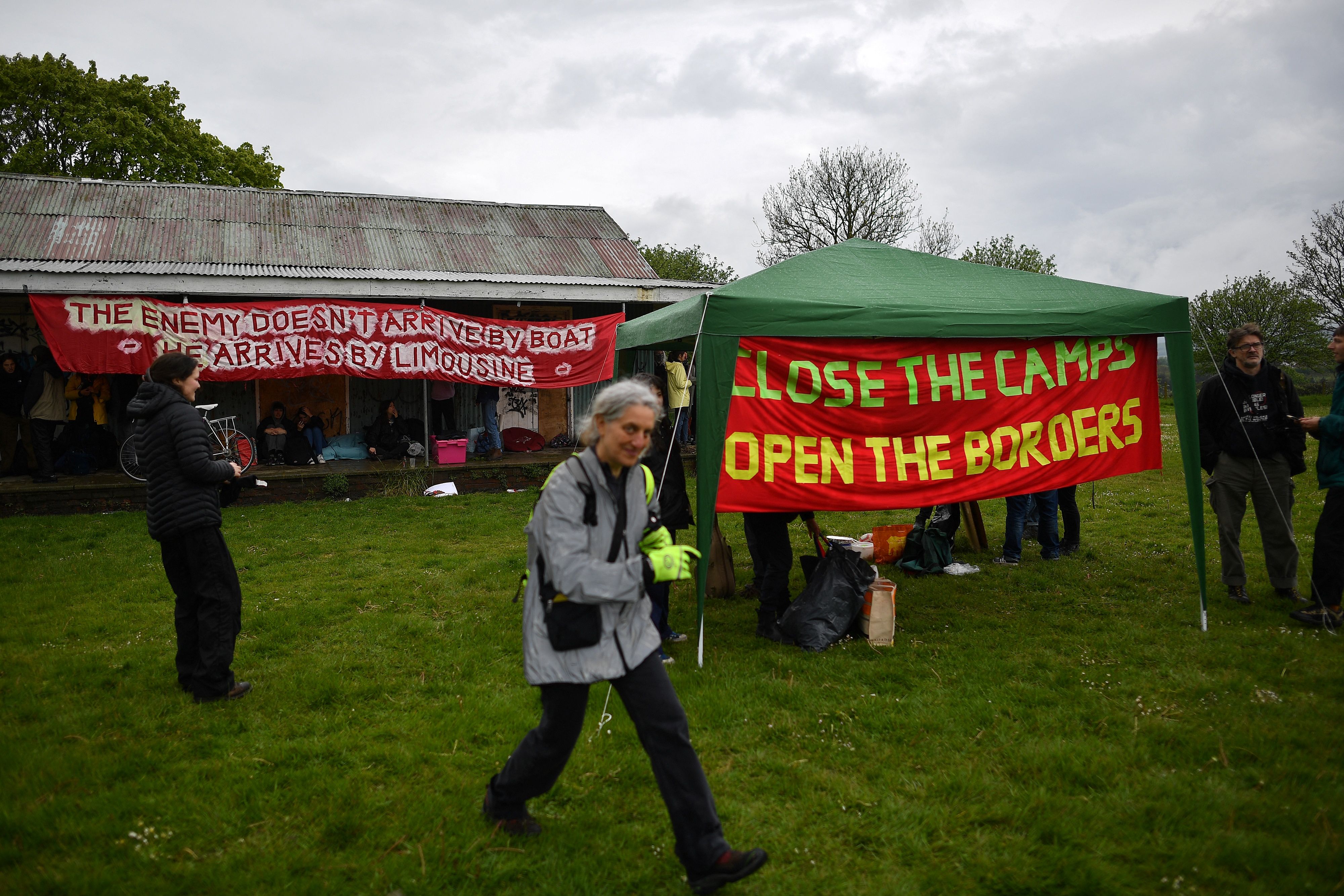
“When I arrived in the camp I saw someone being beaten up by racist people who started shouting at us, yelling that we should leave England and go back to where we came from. We’re not welcome. We’re unwanted. It seems people are repulsed by us. There are around 400 people living here. We queue for food. We’re surrounded by fences. It’s a prison camp. It’s a trap. Some people self-harm. Someone claimed he’d hang himself unless he was transferred soon. I had to translate his words and listen to his devastating story. It hurt me, I could understand his frustrations. He magnified my hopelessness.”
Amid legal arguments that holding asylum seekers at Napier was contrary to their human rights, and the All-Party Parliamentary Group on Detention ordering a public inquiry, Priti Patel insisted that “this site [Napier] has previously accommodated our brave soldiers and army personnel … it is an insult to say that it is not good enough for these individuals”. Her language echoed many right-wing extremists in maintaining that these immigrants do not have any entitlements, and that they are lucky to be provided with accommodation at all. Nigel Farage, writing in The Daily Telegraph, argued coldly against improving Napier and other similar facilities:
“The bigger problem is that more and more people want to come to soft-touch Britain. The expectation of the life on offer has reached the point where some who arrived this year have been protesting angrily about the conditions of the former army barracks where they are being held. These people have claimed asylum in Britain having supposedly fled war-torn countries, yet some seem to think that they can automatically move into their own room in a four-star hotel. They represent a very different kind of asylum seeker to those who have come before them.”
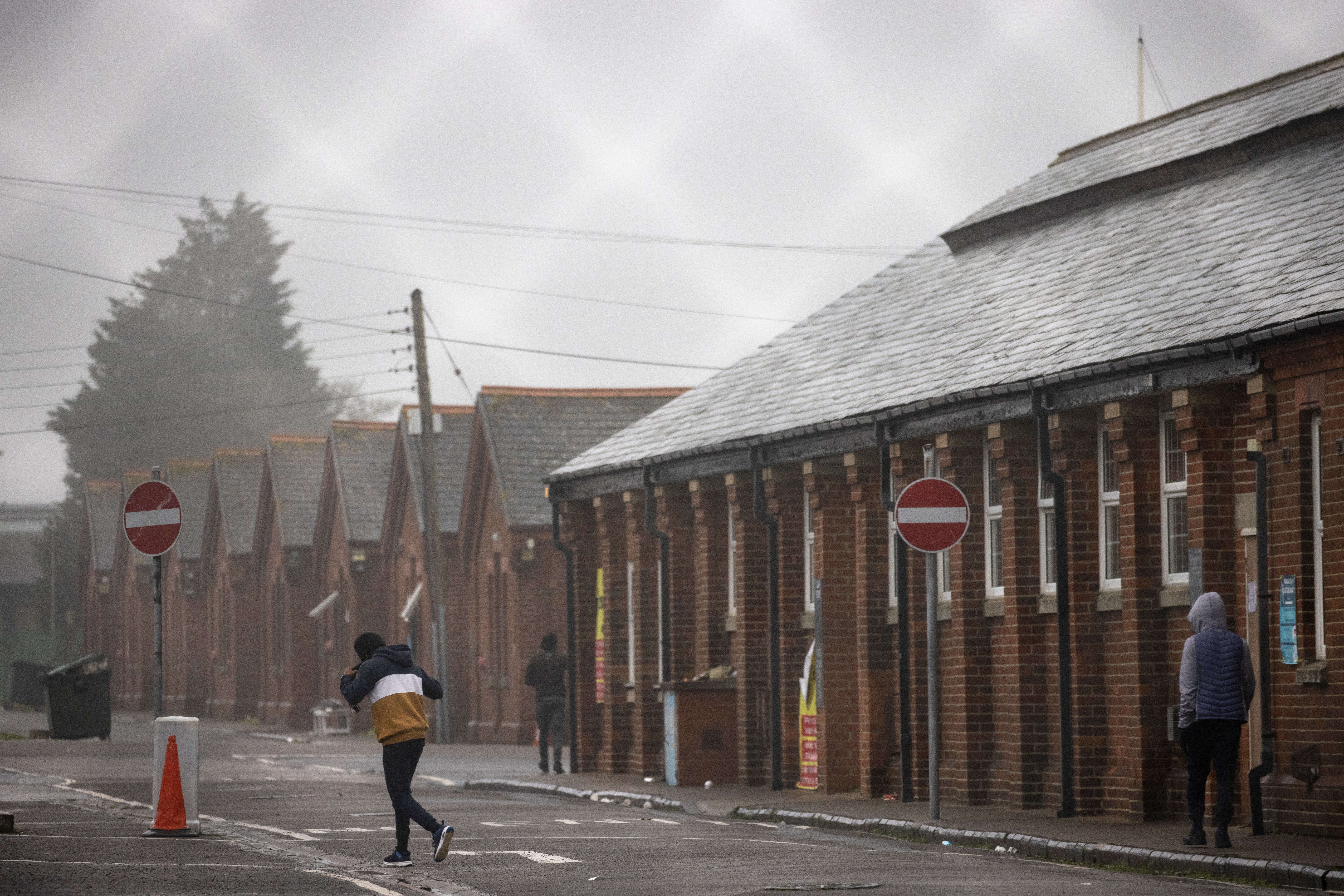
The periodisation offered by Farage suggests that contemporary migrants are economic opportunists, unlike, for example, the Vietnamese boat people who came to the UK in the 1970s and 1980s. Others seemingly agree. In March 2021 a Daily Mail reporter spoke to Hythe residents about the fact that some of those moved out of Napier because of the Covid outbreak were being temporarily housed in the Stade Court Hotel on Hythe’s Marine Parade, 150 yards from Moyle Court. The Daily Mail reported that they were quarantined because they had Covid, whereas they had been moved because they had tested negative. Little of the hospitality shown in the 1970s was reported, with locals angrily suggesting that the asylum seekers were not observing the lockdown, were mixing with others, and were walking along the front with no regard for families. Others took to social media to moan about them being rewarded for burning down Napier by being moved to the luxury of a three-star hotel with wonderful sea views (ignoring the fact that they were moved before the fire). Some proposed a boycott of the hotel, others demanded a council tax rebate. On social media there was a further tirade of contempt and scorn: “They’ve got our hotels, what do they want next? Our homes?”
Britain is a nation built on a mythology that it shelters those fleeing persecution. But this depiction of asylum seekers as parasites on the nation’s hospitality suggests that important shifts have occurred in the imagined relationship between ‘host’ and ‘guest’. The welcome extended to the stranger appears more conditional than it was in the recent past, those coming ‘without invitation’ now subject to sanction and suspicion. Here, the media’s discourse of a ‘migrant crisis’, coupled with the Conservative government’s creation of a hostile environment for undocumented migrants, has created fear and mistrust. In this respect, the distinction sometimes made between the ‘genuine refugee’ of the 1970s and the modern-day ‘economic migrant’ seems to ignore the continuities between then and now: continuing wars and religious persecution, natural disasters fuelled by environmental exploitation and capitalist processes of exploitation that require illegal migrants to perform precarious, expendable and compliant labour. The processes that encourage people to flee to the UK in search of a better life have not fundamentally changed, but the reception they receive has.
But not everyone regards asylum seekers with suspicion, and in Folkestone, as in Margate, there are notable public artworks celebrating immigration and the fusion of cultures it creates. One is Varga Weisz’s five-headed sculpture Rug People, which I first saw in the dilapidated harbour station in 2011, one of the public art installations commissioned for that year’s Triennial. Entitled A million miles from home, and focusing on displacement and travel, the Triennial’s theme seemed particularly apposite for Folkestone, a town whose history has been shaped by refugee journeys, from the arrival of those fleeing Belgium during World War I to the present ‘wave’ of boat people. Nicholas Wybrow writes that ‘this Triennial had obvious ambitions to show how art could open up unseen, unsuspected, through-the-looking-glass worlds that might appear tangential, “far away” or even fantastical, but were actually related immediately to the life of the town’.
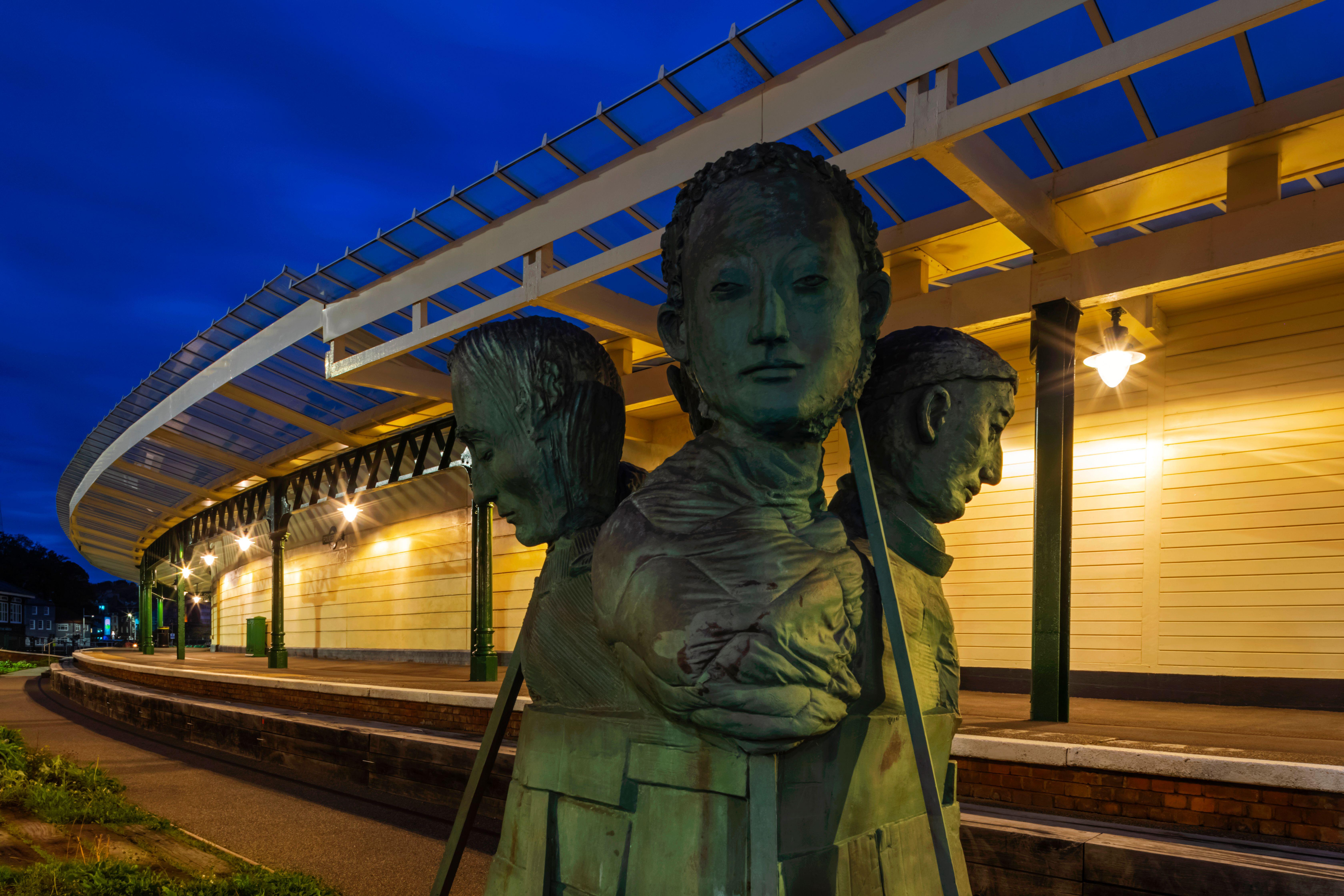
Weisz’s sculpture originally sat on a rug, suggesting a body or bodies keeping warm in blankets or rags, the multiple heads showing people of different ethnicities and evoking notions of multiculturalism. For a while the sculpture sat opposite Tim Etchel’s neon installation behind it, spelling out ‘The coming and going is why the place is there at all’, underlining the idea of Folkestone as a place of transit. Viewed alongside the quote, Rug People spoke of speed and slowness, of the varied mobilities that characterise the contemporary world, and the divide between those who can legally cross borders and the kinetic underclass who cannot. The sculpture is simple and effective: it depicts a group of travellers waiting for a train that will never come.
The carpet is now long gone, rotted by years of rain, but the sculpture remains, no longer in rusted ruins but in a beautifully restored railway station, redolent of the elegant days of the Orient Express. This imbues the sculpture with new meanings, contrasting those who have crossed the Channel smoothly, and in style, with those for whom the Channel represents a dangerous and fraught passage. Here, it is important to note that German-based Weisz was inspired to make the installation following her own journey to Folkestone, having witnessed refugees in the camps of Calais. As someone whose own family fled Nazi Germany, the existence of these camps obviously struck a chord with her. A decade or so later, the installation seems more relevant than ever.
‘Borderland’ will be published in paperback on 28 June (£15.99 RRP). https://manchesteruniversitypress.co.uk/9781526153876/






Join our commenting forum
Join thought-provoking conversations, follow other Independent readers and see their replies
Comments